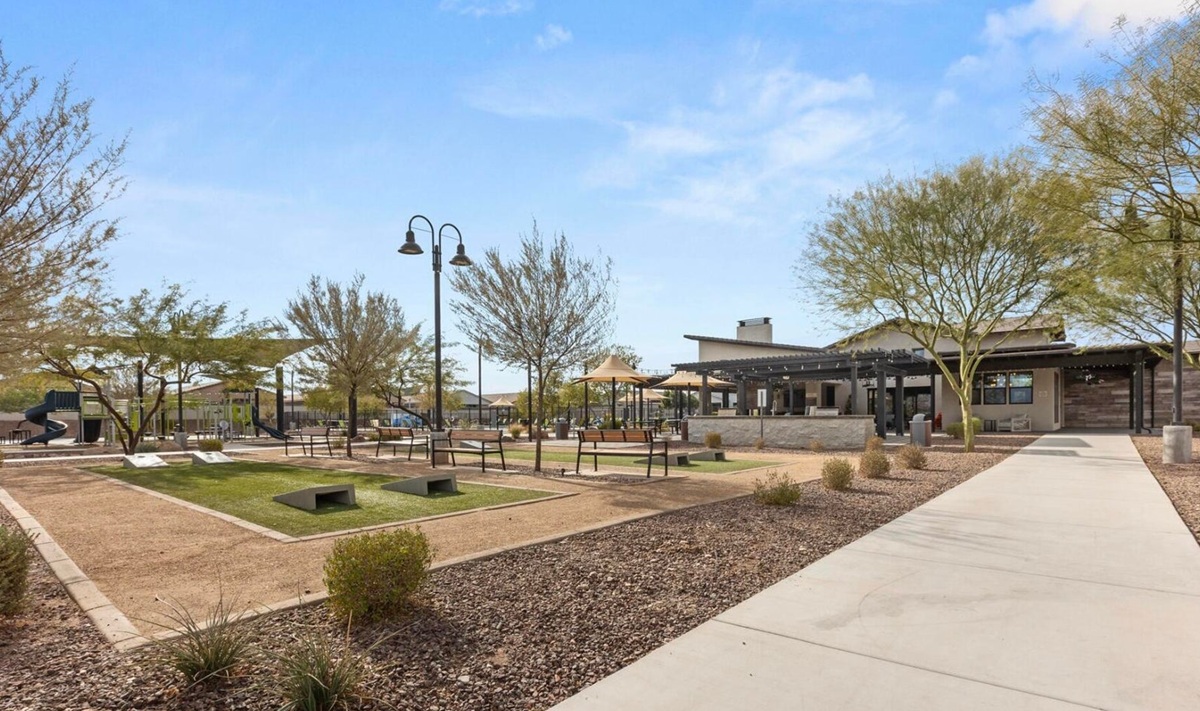San Tan Valley’s New Town Status & Why It Matters To Everyone
San Tan Valley’s New Town Status
The vote landed like a drumbeat. On August 5, residents approved incorporation with 66.6%. A simple yes turned into a big pivot. A nameplate changes, a map line moves, a playbook opens. Full town operations target 2026, which gives time to build the bones. You can feel the shift already. Not loud, but steady.
The Big Picture Shift & What A Town Signals
A place becomes a town, and decisions move closer to the kitchen table. Services that lived at the county begin to phase into local hands. Zoning, land use, and capital projects get a tighter lens, shaped by people who live on the same streets. Visibility rises because “Town of San Tan Valley” reads differently on a site plan, a ballot, a budget. Confidence builds when residents see a council, a calendar, and a clear process. That cadence changes how projects start, how they finish, and how they feel. Momentum compounds in small steps. That is the story to watch.
-
Local voice grows
-
Faster, tailored responses
-
Zoning gets sharper
-
Amenities align locally
-
Budgets tie to needs
Think of it as control meeting accountability. Plans can match daily life, not distant assumptions. Over time, that tends to support better infrastructure, better coordination, and cleaner outcomes.
Money Closer To Home & What It Can Do
Follow the dollars. Estimates put annual tax revenue at roughly $51.3 to $65 million across San Tan Valley. Today, a chunk routes through county channels. As the town stands up, the goal is to direct more of that toward local priorities. Roads. Parks. Permit systems. Those basics set the floor for everything else. When money sticks, projects stack. That feedback loop can be powerful.
-
Pave high-need corridors
-
Modernize permitting tech
-
Add park space
-
Maintain streets on schedule
-
Fund small but vital fixes
None of this happens in one burst. It happens budget by budget, line by line. Still, keeping funds nearby can speed practical wins you actually notice.
Also Read: Big Ways Greater Phoenix Has Evolved Over The Last Decade

The Next 12 To 18 Months & The On-Ramp
Short term, think transition with guardrails. Pinal County keeps services running while the interim council builds processes. Trash gets picked up, streets get maintained, and public safety coverage continues. You should see clearer communication on road work, permits, and timelines. The “town” label alone tends to draw new attention from buyers, builders, and investors. Some residents prefer bundled city services instead of separate contracts. Confidence nudges demand, even without dramatic change.
-
Expect steady service
-
Watch for new town updates
-
Slight demand bump likely
-
Cleaner info on permits
-
Early wins on small projects
Treat this period like a handoff with a playbook. The key is clarity. Who does what, when, and how. The fewer surprises, the smoother the turn.
What Actually Changes From County To Town Control
Shifts roll in phases, not overnight. Law enforcement, streets, and utilities move under town influence over time. Zoning and land use gain a local compass. Timelines can shrink when decisions sit down the road rather than across the county. Taxes may adjust depending on the rates the council sets. Structure brings predictability. Predictability attracts commitment.
-
Services migrate gradually
-
Local zoning authority
-
Faster issue resolution
-
Possible tax adjustments
-
Clearer accountability
The theme is proximity. Decisions get made by people you can find at a meeting on Tuesday night. That matters for trust and outcomes.
Also Read: The Pros And Cons Of Living In A Luxury Condo In Scottsdale

Growth Path & The Long Game For Values
Values tend to follow planning, infrastructure, and amenities. As control tightens, the town can set standards that lift neighborhoods. New homes, fresh commercial nodes, and smart corporate bets will do the heavy lifting. Good zoning keeps low-value uses in check. Better connectivity multiplies the effect. Builder confidence rises when the plan stays consistent. That rhythm supports the market.
-
Plan infrastructure early
-
Approve quality projects
-
Protect character corridors
-
Connect neighborhoods
-
Keep standards consistent
-
Pace growth with services
This is a marathon with checkpoints. Steady pressure up, not spikes. Execute the plan cleanly, and the compounding shows up.
Ripples Across 'The Valley' & Greater Phoenix
A new town in the Southeast corridor reshapes the regional board. With a clearer hub, nearby areas can see spillover benefits. Commutes link. Retail follows rooftops. Infrastructure ties submarkets that felt separate. Regional employers notice where approvals are predictable. That can pull fresh investment across 'The Valley.' Strength in one pocket helps the next.
-
Stronger east-west links
-
Coordinated arterials
-
New job nodes
-
Broader retail mix
-
Shared amenities uplift
Greater Phoenix runs on connectivity. San Tan Valley’s structure can plug gaps, align priorities, and spread gains past the border.
Also Read: Why Are So Many People Moving To Arizona? Top Reasons

Watch Outs & Real Risks To Track
Policy friction slows momentum. Inconsistent rules, surprise fees, or bottlenecked permitting can push projects to adjacent markets. A sizable share voted no, and some residents may exit if growth feels too fast. Traffic pain points can sour sentiment if left alone. Communication gaps create rumor spirals. Dollars drift when timelines wobble. Keep eyes open.
-
Keep rules consistent
-
Price fees with value
-
Fix known chokepoints
-
Publish clear timelines
-
Report progress often
-
Adjust when data points shift
Every town faces tradeoffs. Name the risks, measure them, and respond. That is how you keep confidence high.
What Residents & Builders Can Do Now
Everyone has a role. Residents can plug into council meetings, surveys, and budget hearings. Builders can align submittals with emerging standards and leave timeline cushion. Businesses can prep for a new address line and confirm licensing steps. Community groups can flag priority corridors and park needs. Clean data in, better decisions out. That loop improves outcomes.
-
Track town calendars
-
Subscribe to updates
-
Map contacts by function
-
Confirm taxes and fees
-
Verify service providers
-
Share project timelines
Small moves add up. The earlier you engage, the fewer headaches later. Participation turns plans into pavement and parks.
Bottom Line & What To Expect Next
Incorporation adds clarity and local control. That combination tends to support demand and values over time, if growth policies stay clean and predictable. Services keep running during the buildout, then shift as the town takes the wheel. The money case looks strong if budgets stick to visible wins. By 2026, the structure should be fully in place. From there, it is execution, communication, and compounding benefits you can actually see.
Also Read: Latest Greater Phoenix Real Estate Statistics For August 2025


















